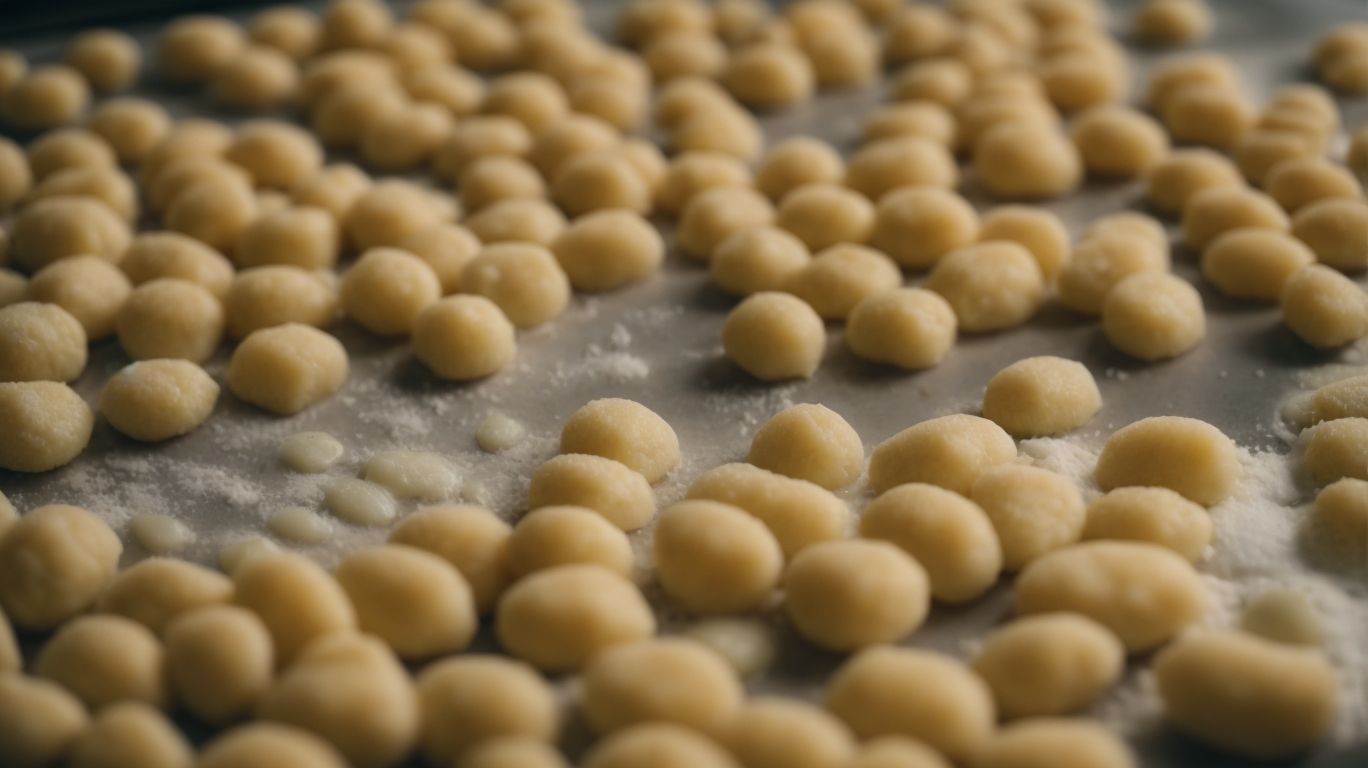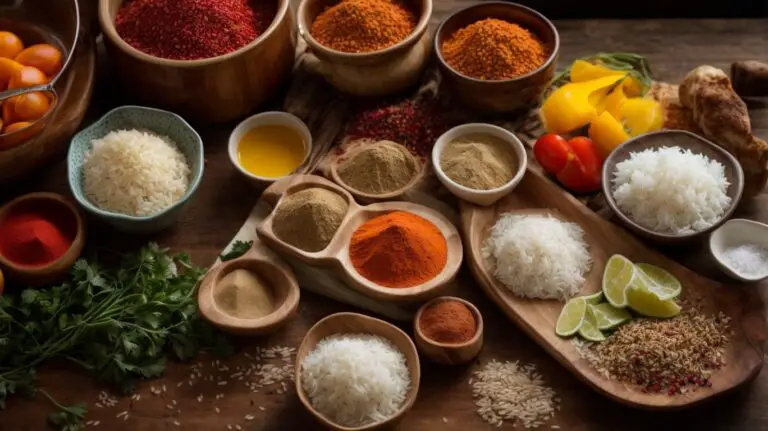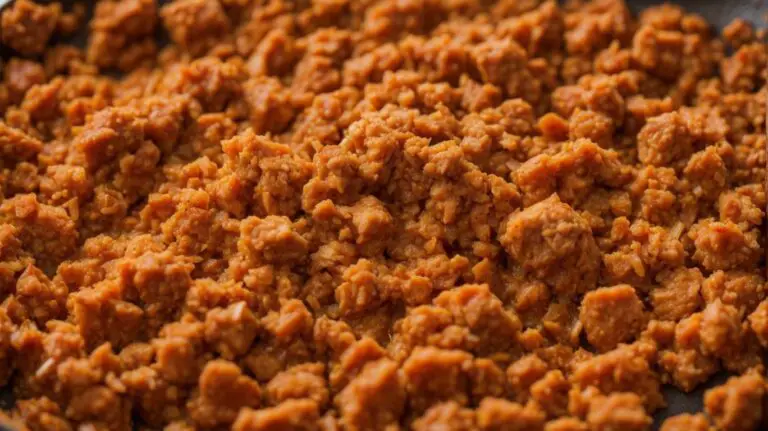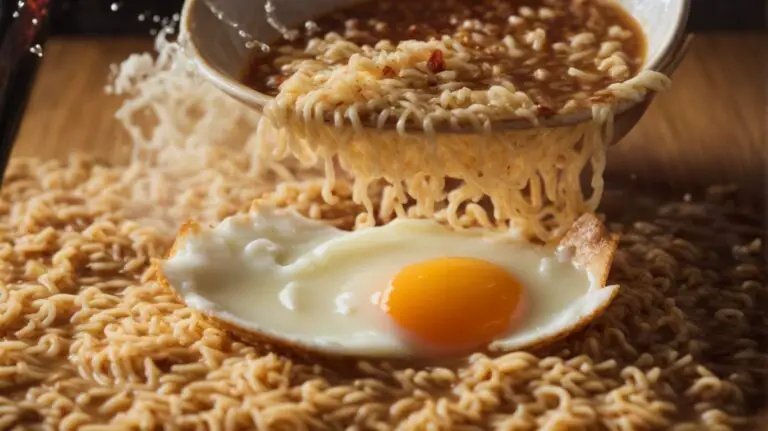How to Cook Gnocchi?
Welcome to a delicious culinary journey with Chef Chris Poormet, where we explore the art of cooking Gnocchi.
In this article, we will dive into the origins of Gnocchi, the different types available, and the step-by-step process of making this delectable dish.
From shaping the dough to boiling the Gnocchi, we will guide you through the cooking process. We will share the best sauces to pair with Gnocchi and provide valuable tips for achieving the perfect texture.
Let’s get cooking!
Key Takeaways:
About the Chef: Chris Poormet
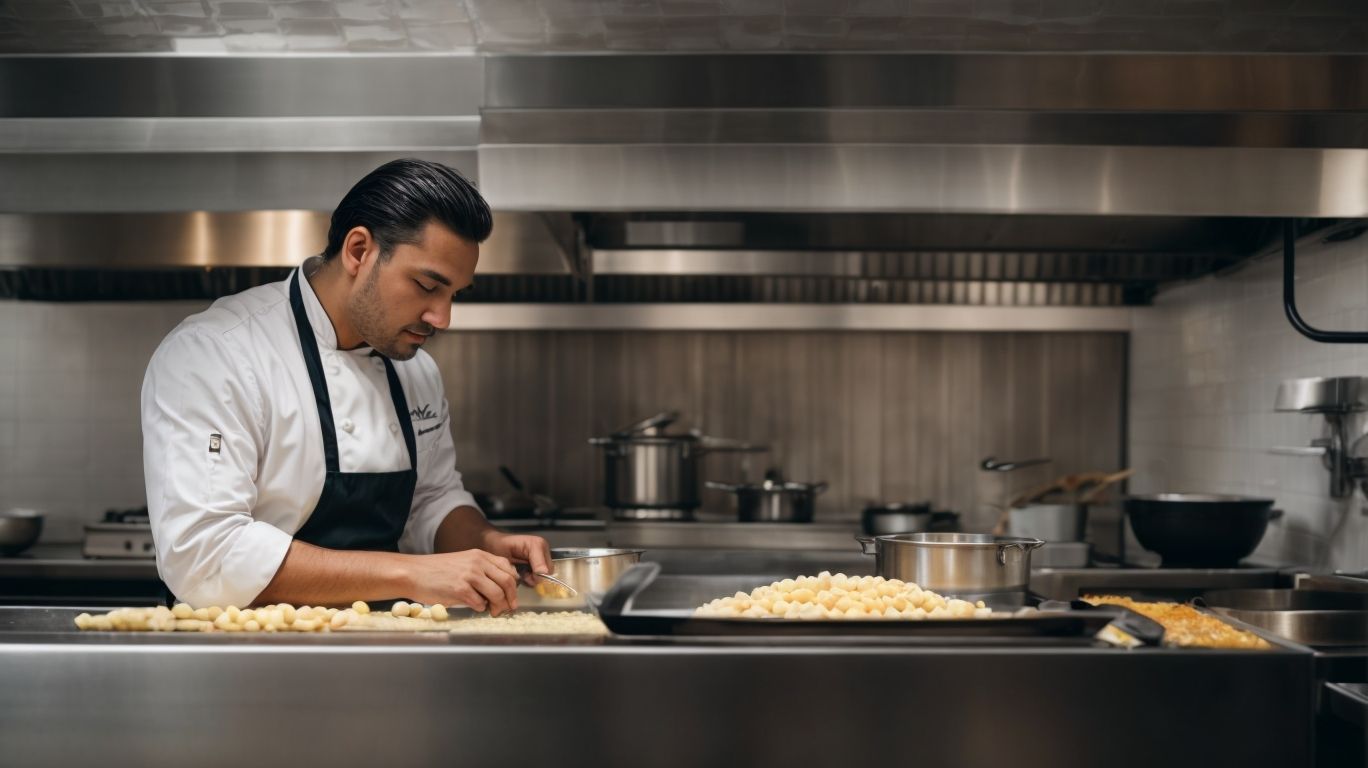
Credits: Poormet.Com – Jonathan Robinson
Chris Poormet, the proud owner of Poormet.com, a renowned blog showcasing award-winning recipes and culinary tips that earned him the title of Culinary Blogger of the Year, boasts a prestigious culinary background with expertise in food photography.
His passion for creating delectable dishes that not only tantalize the taste buds but also please the eyes is evident in every blog post. Chris’s innovative cooking techniques and artistic presentation have garnered a loyal following of food enthusiasts seeking inspiration in the kitchen. His meticulous attention to detail and dedication to sharing his culinary journey sets him apart in the competitive world of gastronomy.
What is Gnocchi?
Gnocchi, a traditional Italian dish, is a type of pasta made from a mixture of potatoes, flour, and other savory ingredients, forming small dumplings that are often served with various sauces.
Originating from the Northern regions of Italy, gnocchi holds a special place in Italian cuisine, with its origins dating back to the Roman Empire. The basic preparation includes boiling potatoes, mashing them, and mixing them with flour and seasonings to create a dough. The dough is then shaped into small dumplings and often imprinted with the characteristic fork marks to hold sauces better. Gnocchi can be served with ragu, pesto, butter, or creamy sauces, offering a versatile and comforting dining experience.
What are the Ingredients for Gnocchi?
The essential ingredients for making delicious gnocchi include potatoes, flour, Parmesan cheese, and a blend of savory ingredients. These components harmonize to form the foundation of the gnocchi dough, each playing a crucial role in texture and taste. Potatoes, typically starchy varieties like Russets, provide the base, contributing to the dumplings’ softness.
The flour aids in binding the ingredients, ensuring the dough holds together when cooked. Parmesan cheese adds a rich, umami depth, elevating the overall flavor profile. Alongside, the savory elements, such as salt, pepper, and sometimes nutmeg, infuse the dough with a delightful seasoning. Balancing these components is key to producing gnocchi with the ideal chewiness and taste.
What are the Different Types of Gnocchi?
Gnocchi comes in various forms, including potato gnocchi, ricotta gnocchi, and flour-based gnocchi, each offering a unique texture and taste profile that cater to diverse culinary preferences.
Regarding potato gnocchi, the key ingredient is, as the name suggests, potatoes. These dumplings are typically made by mixing mashed potatoes with flour, egg, and salt, creating a soft and pillowy texture. On the other hand, ricotta gnocchi incorporate creamy ricotta cheese into the dough, resulting in a lighter and slightly tangy flavor.
Flour-based gnocchi are a versatile option that can be made with various types of flours, such as all-purpose flour or semolina. This variation often yields a firmer texture compared to potato or ricotta gnocchi.
How to Cook Gnocchi?
Cooking gnocchi involves a series of steps starting from making the dough to shaping the dumplings and finally boiling them to perfection, ensuring a delightful texture and flavor that complements a variety of sauces.
Once you’ve prepared the dough by combining flour, mashed potatoes, and egg, the next crucial step is rolling and cutting the gnocchi into small pieces, typically with the back of a fork to create those signature ridges that help hold the sauce.
After shaping the dumplings, carefully drop them into a pot of boiling salted water, making sure not to overcrowd the pan to prevent sticking. Gradually, they will rise to the surface, indicating they are ready to be removed and served with your choice of sauce, whether it’s a classic tomato basil or a creamy pesto.
Step 1: Making the Dough
To begin the gnocchi-making process, combine mashed potatoes with flour to form a smooth, pliable dough that serves as the foundation for creating the signature dumplings in this classic Italian dish.
Regarding making gnocchi dough, the ratio of potato to flour is crucial. Achieving the right balance ensures that the gnocchi have the perfect texture and consistency. Too much flour can result in dense, heavy gnocchi, while too little flour can make the dough overly soft and sticky.
Getting the right potato-flour ratio is key to success in creating light and fluffy gnocchi. The consistency of the dough should be firm enough to hold its shape when rolled but not so dense that it becomes tough after cooking.
Step 2: Shaping the Gnocchi
After preparing the dough, shape the gnocchi into small dumplings by rolling and cutting them into uniform pieces, ensuring that each gnocchi retains its traditional pillow-like shape that enhances its texture when cooked.
To achieve consistency in size and shape, work swiftly but gently, using a light touch as you handle the dough. Be mindful not to overwork the gnocchi, as this can result in a dense final product. Practice makes perfect in this process, so don’t be discouraged if your first attempts are not flawless. It’s all part of the learning curve in mastering the art of creating delectable gnocchi.
Step 3: Boiling the Gnocchi
Boil the shaped gnocchi in salted water until they float to the surface, indicating their readiness to be drained and served with your preferred sauce or accompaniments, ensuring a perfectly cooked pasta dish with tender dumplings.
When boiling gnocchi, it’s crucial to closely monitor the cooking process. As the gnocchi cook, they will drop to the bottom of the pot. Watch carefully, and as soon as they rise to the top, it signifies that they are cooked and ready to be enjoyed. This floating method ensures that the dumplings are light and fluffy, achieving the desired texture.
It’s also important not to overcrowd the pot when boiling the gnocchi as this could impact their cooking time and consistency. Give them enough space to move freely in the boiling water for even cooking.
What are the Best Sauces to Serve with Gnocchi?
Gnocchi pairs exceptionally well with a variety of flavorful sauces, including classic tomato sauce, creamy pesto sauce, and indulgent brown butter and sage sauce, each enhancing the delicate taste of the pasta dumplings.
Tomato sauce, known for its rich and tangy flavor profile, complements the soft texture of gnocchi perfectly, creating a comforting and familiar dish.
On the other hand, pesto sauce, made with fresh basil, pine nuts, garlic, and Parmesan cheese, offers a vibrant and herbaceous twist to the dish, adding a burst of freshness.
Meanwhile, the decadent combination of brown butter and sage sauce brings a nutty aroma and a hint of earthiness that elevates the overall taste experience of the gnocchi.
Classic Tomato Sauce
The classic tomato sauce, a timeless accompaniment to gnocchi, features a rich blend of stewed tomatoes, aromatic garlic, and fragrant basil, creating a savory and tangy topping that complements the soft texture of the pasta dumplings.
For a traditional Italian tomato sauce, start by heating olive oil in a pan over medium heat and sautéing finely chopped onions until they turn translucent. Add crushed tomatoes and simmer gently, allowing the flavors to meld together. Season with salt, pepper, and a pinch of sugar to balance the acidity of the tomatoes. Some recipes call for a touch of red wine or balsamic vinegar for added depth. Many variations exist across Italy, from the rich marinara of the south to the simple tomato and herb sauce in Tuscany.
Creamy Pesto Sauce
The creamy pesto sauce, a luscious choice for gnocchi, combines fresh basil, aromatic Parmesan cheese, and a splash of white wine to create a decadent and herbaceous sauce that coats the pasta dumplings in a luxurious green hue.
When preparing this indulgent sauce, the key lies in sourcing the freshest basil leaves, plump with their fragrant oils that burst with each bite. The Parmesan, rich with its nutty undertones, is finely grated to infuse the sauce with a velvety smoothness. Adding a touch of white wine not only elevates the flavor profile but also aids in achieving the desired creamy consistency.
The magic truly unfolds when these ingredients meld together, creating a tantalizingly aromatic symphony that transports you to an Italian trattoria with each forkful. It’s the perfect blend of simplicity and sophistication that harmonizes beautifully with the tender gnocchi, offering a burst of flavors and textures in every mouthful.
Brown Butter and Sage Sauce
The brown butter and sage sauce, a decadent option for gnocchi, features nutty browned butter infused with aromatic sage and garlic, creating a velvety sauce that envelops the pasta dumplings in rich, savory flavors.
Preparing the brown butter and sage sauce involves a delicate process of browning the butter to perfection.
This technique enhances the butter’s flavor by allowing the milk solids to caramelize, imparting a deep, nutty taste.
The addition of fragrant sage and garlic elevates the sauce, infusing it with earthy undertones that harmonize beautifully with the tender gnocchi.
This savory combination not only delights the taste buds but also adds a touch of sophistication to the dish, making it a standout choice for any pasta lover.
What are Some Tips for Cooking Perfect Gnocchi?
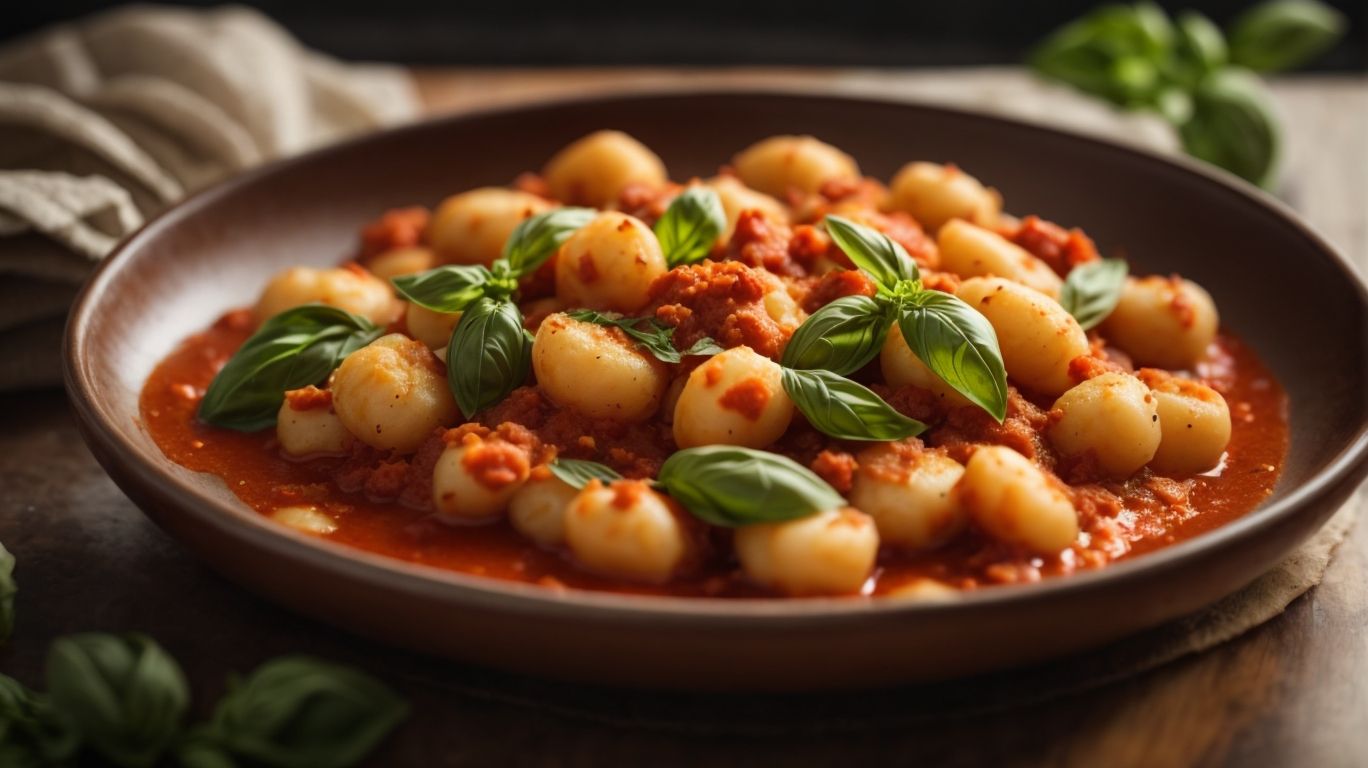
Credits: Poormet.Com – Philip Garcia
To achieve perfectly cooked gnocchi, follow essential tips such as using the right pot size, salting the boiling water, avoiding overcrowding, and employing a slotted spoon for ideal gnocchi removal, ensuring a delightful dining experience with each batch of pasta dumplings.
If you’re unsure about the pot size, opt for a large pot with ample water to prevent the gnocchi from sticking together. Remember to add salt to the boiling water, as this not only flavors the pasta but also helps maintain its structure during cooking. Another crucial aspect is to avoid overcrowding the pot; give the gnocchi space to float freely and cook evenly.
Regarding removing the cooked gnocchi from the water, a slotted spoon is your best friend. The spoon allows you to scoop out the gnocchi without draining excess water and risking breakage.
Use the Right Pot
Select a pot that allows ample space for the gnocchi to move freely during boiling, ensuring even cooking and preventing clumping or sticking of the delicate pasta dumplings to the pot surface.
Having enough room in the pot is crucial because when gnocchi cook, they tend to expand and float to the surface. If the pot is overcrowded, they may not cook evenly and can stick together, leading to a less than desirable texture. Along with space, the water volume is also important as it should cover the gnocchi comfortably, allowing them to boil properly without overcrowding. A larger pot not only accommodates the gnocchi better but also helps maintain a consistent boiling temperature throughout the cooking process.
Salt the Water
Add salt to the boiling water before cooking the gnocchi to enhance the pasta dumplings’ flavor and prevent them from sticking together, imparting a subtle seasoning that elevates the overall taste of the dish.
When you add salt to the boiling water, it not only seasons the gnocchi from within but also helps maintain a balance in the dish’s flavors. The salt penetrates the gnocchi during the cooking process, ensuring that every bite is infused with a delightful taste. The presence of salt in the water influences the temperature at which the gnocchi cook, affecting their texture.
This simple step can make a significant difference in how your gnocchi turn out – perfectly cooked and bursting with flavor. The salted water technique is a culinary secret that chefs swear by for achieving outstanding gnocchi dishes.
Don’t Overcrowd the Pot
Avoid overcrowding the pot with too many gnocchi at once, as this can lead to uneven cooking and clumping, compromising the texture and presentation of the pasta dumplings when served with your preferred sauce or accompaniments.
Batch cooking small portions of gnocchi ensures each piece has enough room to cook evenly, allowing them to float to the surface when ready. This space management technique promotes consistent texture and prevents sticking.
Space management in the pot also helps in maintaining the ideal temperature and water circulation, crucial for achieving that perfect al dente bite. Remember, a crowded pot means uneven cooking, giving you a mix of overcooked and undercooked pieces, which no one desires. So, ensure each delicate dumpling has its space to shine in the bubbling water.
Use a Slotted Spoon to Remove Gnocchi
When removing cooked gnocchi from the pot, utilize a slotted spoon to drain excess water and transfer the pasta dumplings gently to avoid breakage, preserving their delicate texture and shape for serving with your preferred sauce or accompaniments.
The slotted spoon is ideal for this task as its slots allow the water to drain away while holding the gnocchi securely.
To ensure the gnocchi remain intact, lower the slotted spoon gently into the pot, allowing any excess water to drip off before transferring them to the serving plate or bowl.
This method not only helps maintain the gnocchi’s texture but also prevents them from sticking together.
Remember, the way you handle the gnocchi can greatly impact the final presentation and enjoyment of your dish!
How to Store Leftover Gnocchi?
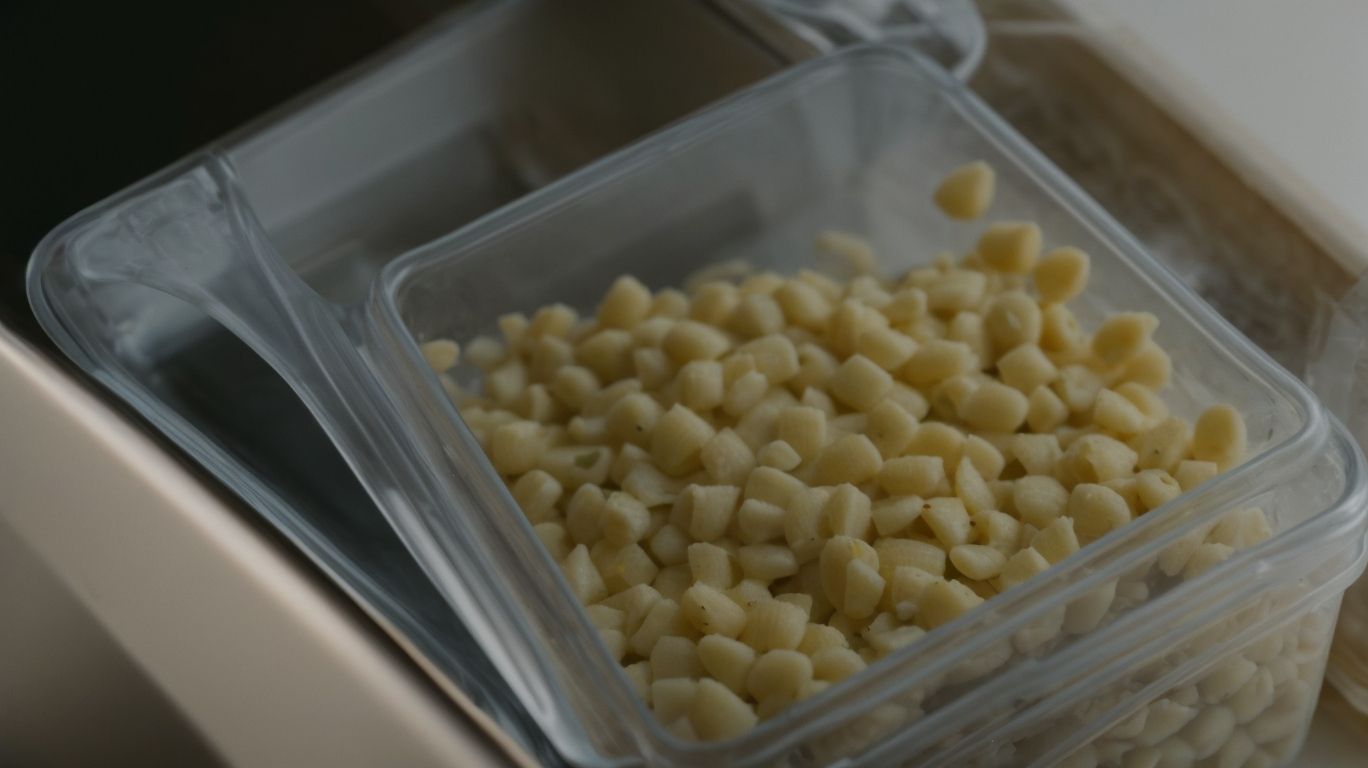
Credits: Poormet.Com – Charles Ramirez
To store leftover gnocchi, consider refrigerating them in an airtight container or freezing them for future use, ensuring that the pasta dumplings retain their freshness and flavor whether store-bought or homemade.
Refrigerating leftover gnocchi is an ideal short-term solution to maintain their quality. When refrigerating, ensure the airtight container is free from any other strong odors to prevent the gnocchi from absorbing unwanted flavors. Label the container with the date to keep track of freshness.
On the other hand, freezing gnocchi can extend their shelf life for several months. For freezing, arrange the dumplings in a single layer on a baking sheet before transferring them to airtight containers or freezer bags. This prevents the gnocchi from sticking together and makes it easier to portion out later.
Frequently Asked Questions
1. How to Cook Gnocchi?
Cooking gnocchi is a simple process that only requires a few basic steps. First, boil a pot of salted water. Then, add the gnocchi and cook until they float to the surface, which should take about 2-3 minutes. Finally, drain and serve with your desired sauce or toppings.
2. Can I use any type of potatoes for gnocchi?
While most gnocchi recipes call for russet potatoes, you can also use other types like Yukon Gold or red potatoes. Just make sure to select ones with a higher starch content, as this will give you a better texture for your gnocchi.
3. How do I know when the gnocchi is cooked?
As mentioned before, the gnocchi will float to the surface when they are fully cooked. However, you can also do a quick taste test. The gnocchi should be tender and cooked all the way through, without any raw or doughy spots in the center.
4. How can I prevent my gnocchi from sticking together?
To prevent your gnocchi from sticking together, make sure to use enough water when boiling and stir them gently during the cooking process. Additionally, you can add a little bit of olive oil to the water to prevent sticking.
5. Can I freeze gnocchi for later use?
Yes, you can freeze uncooked gnocchi for later use. Simply place them on a baking sheet lined with parchment paper and freeze until solid. Then, transfer them to a freezer-safe bag or container and store for up to 2 months. When ready to use, cook them straight from frozen.
6. Are there any alternative methods for cooking gnocchi?
Yes, there are a few alternative methods for cooking gnocchi. You can pan-fry them in a bit of butter or oil for a crispy texture, or even bake them in the oven for a healthier option. Just make sure to adjust the cooking time and temperature accordingly.

